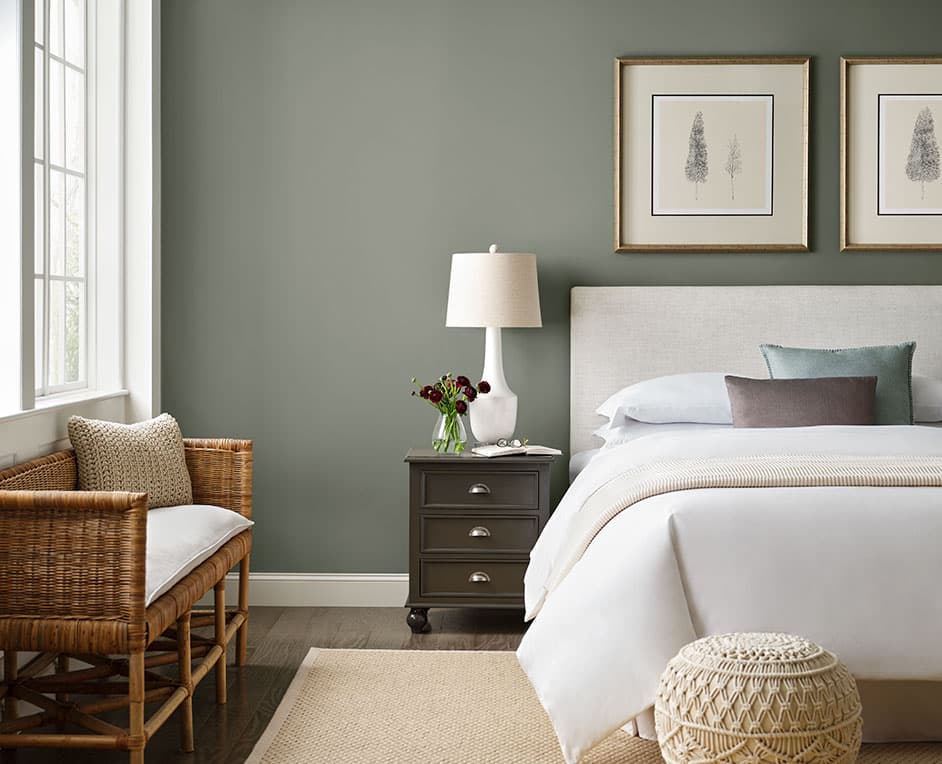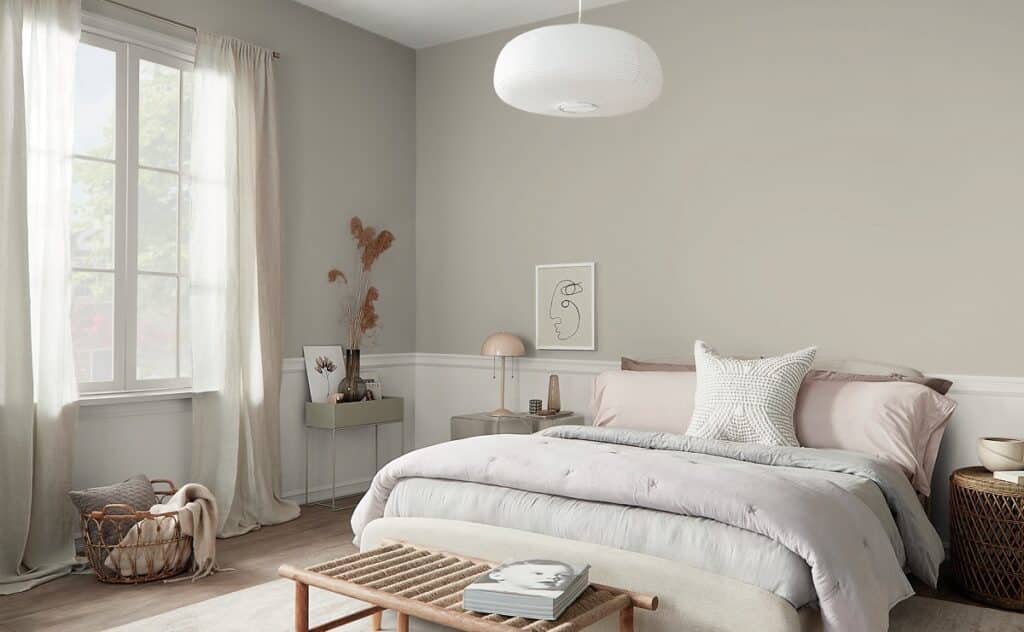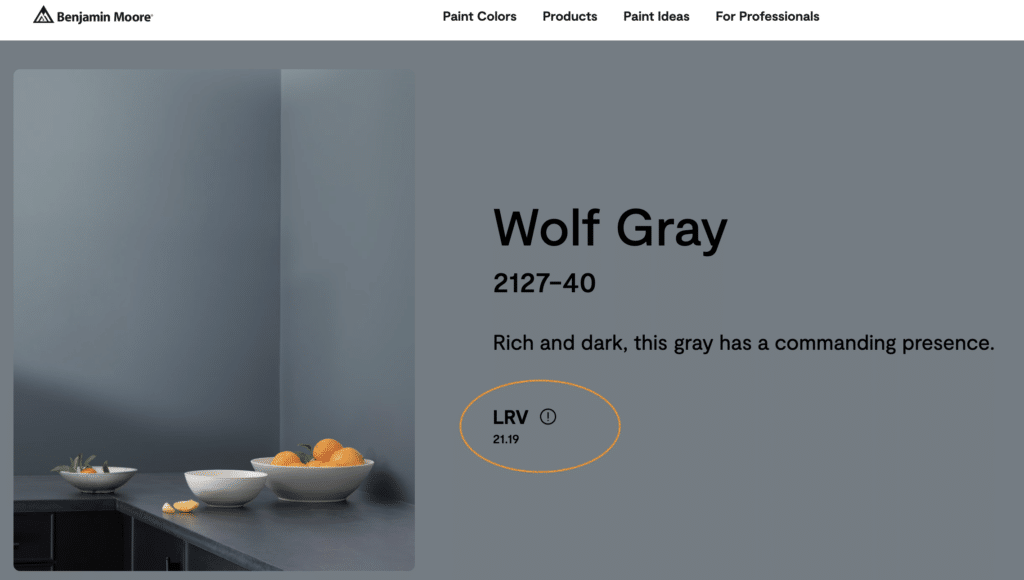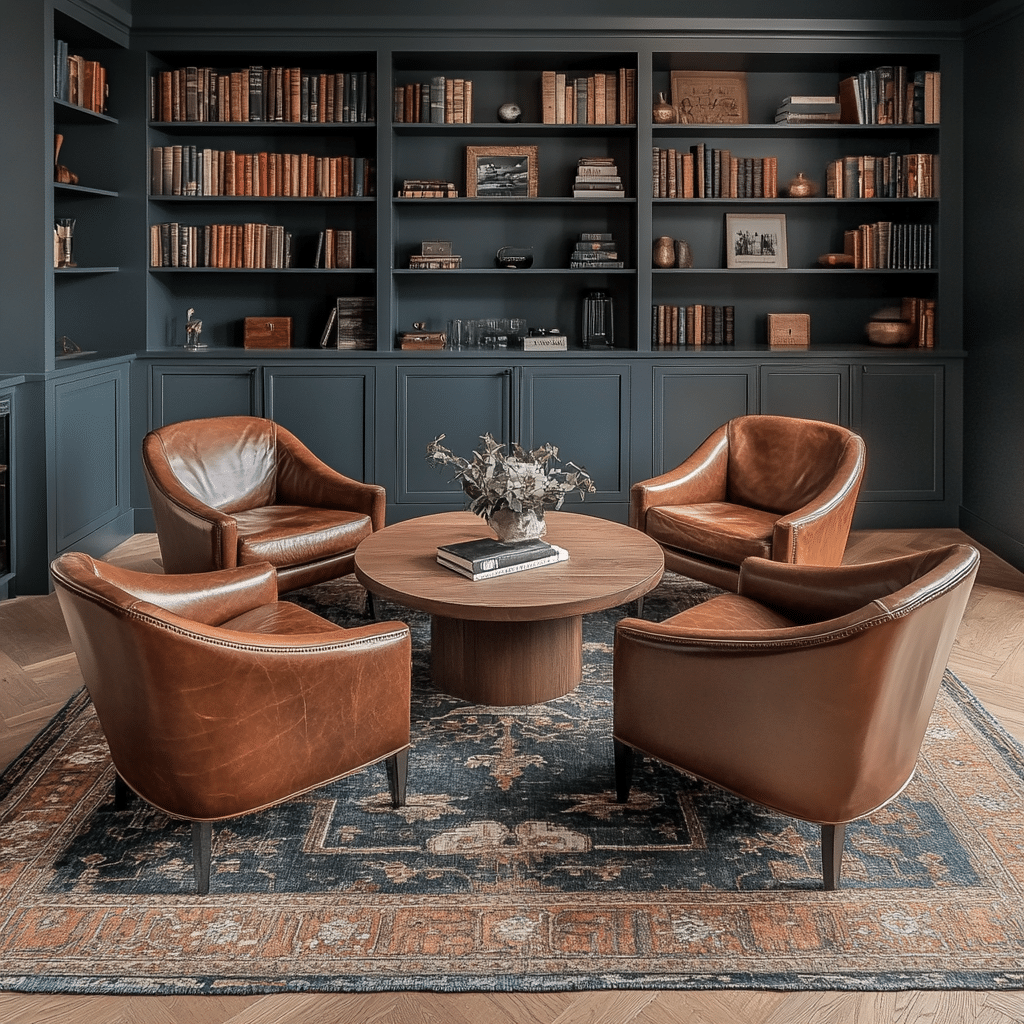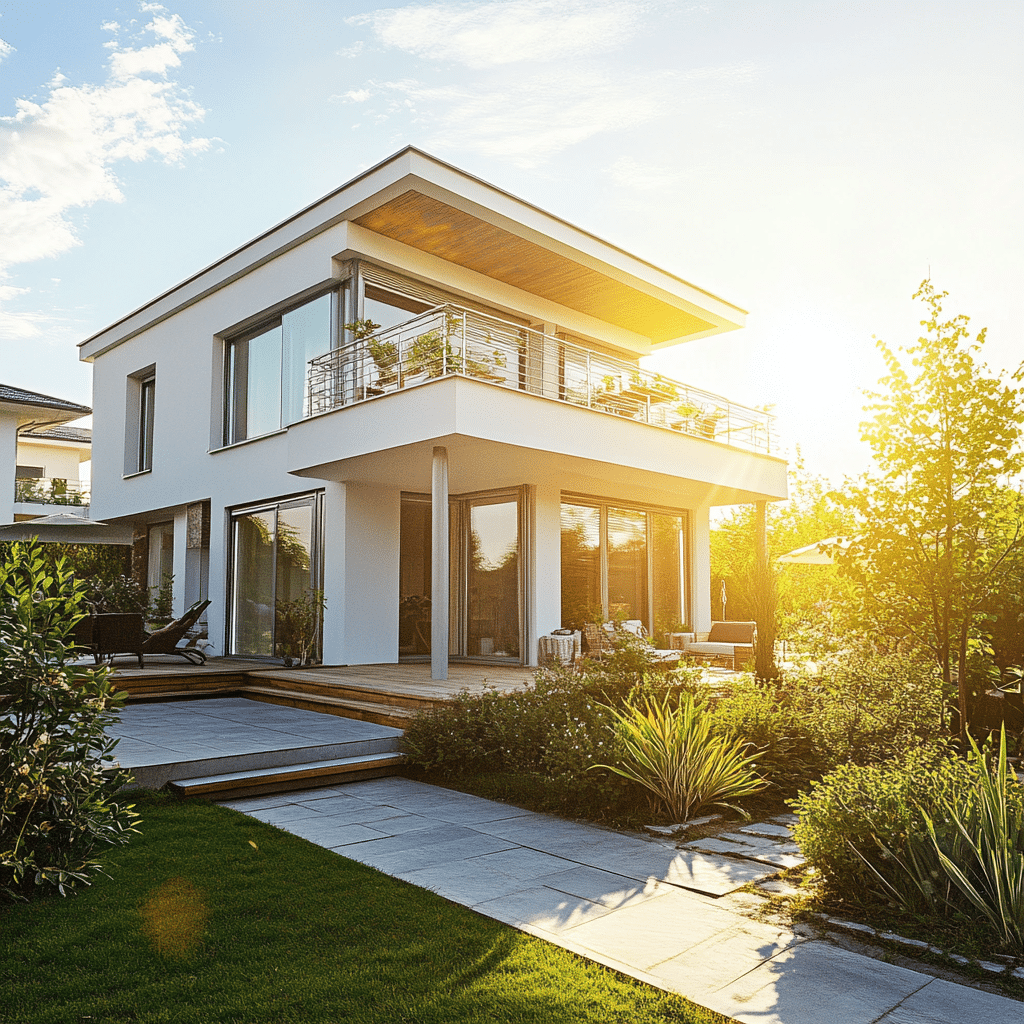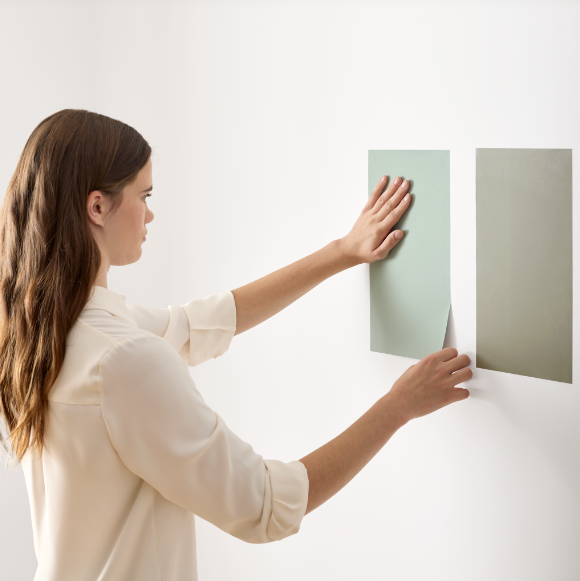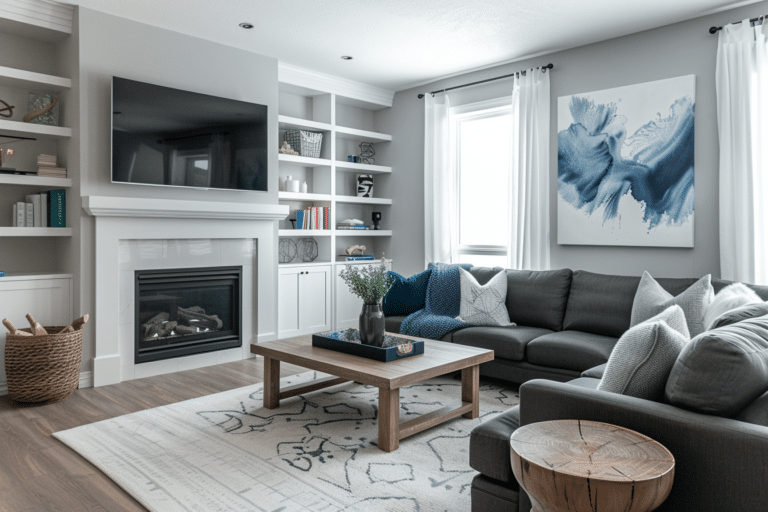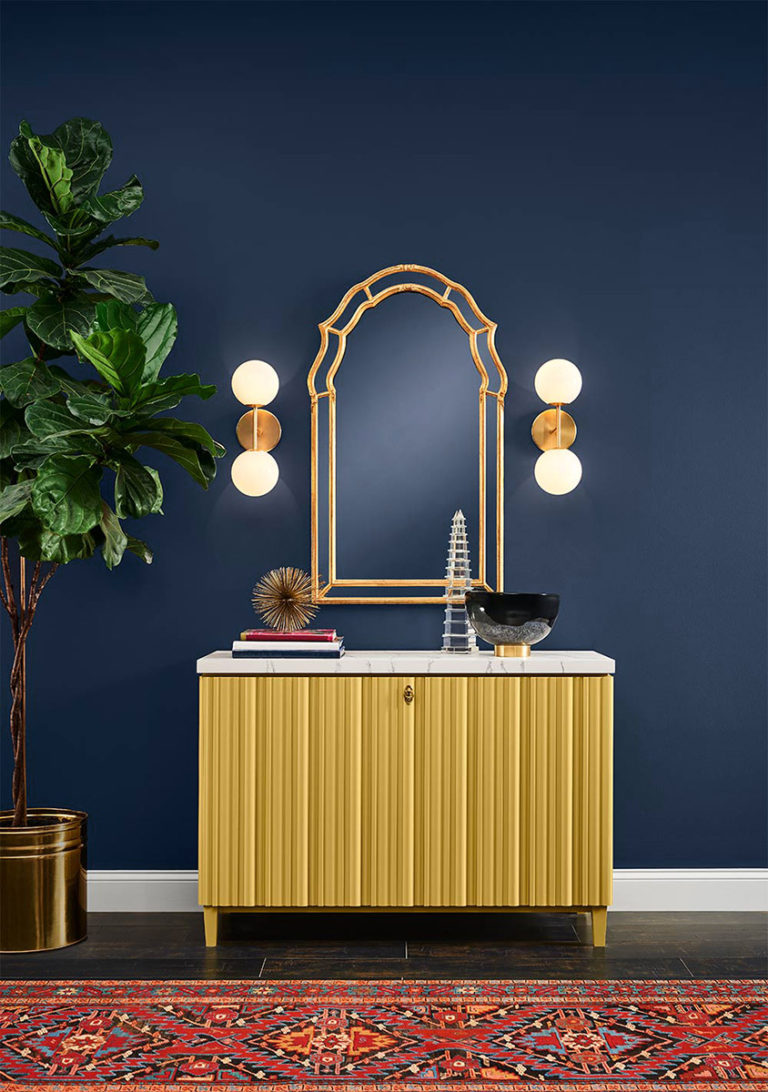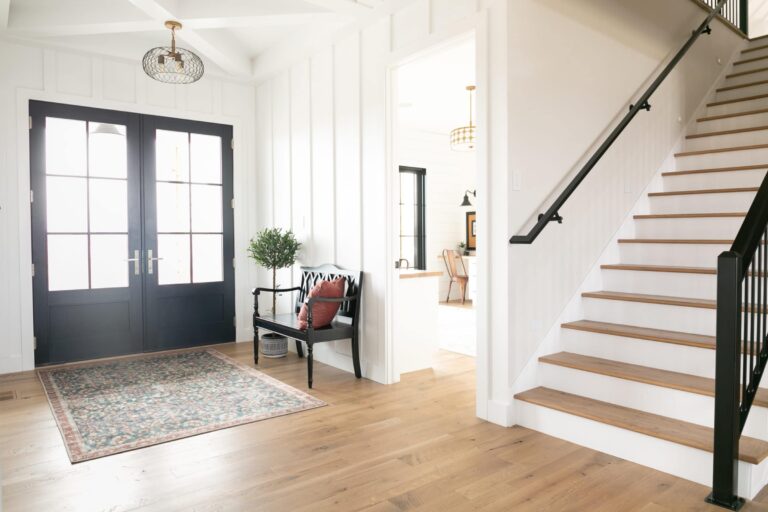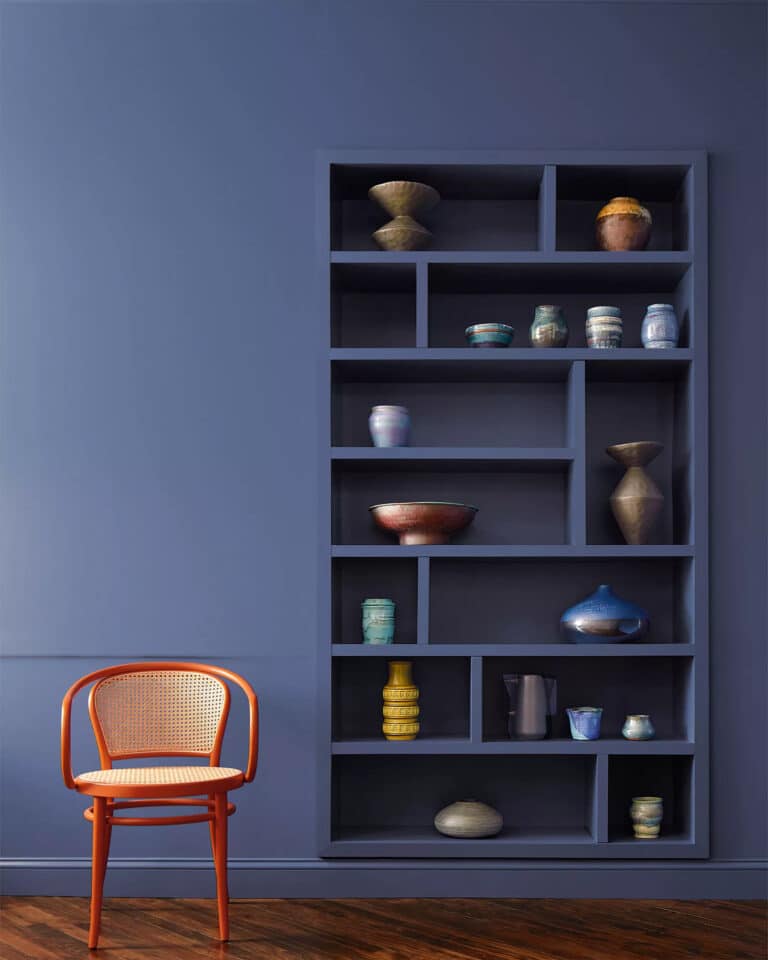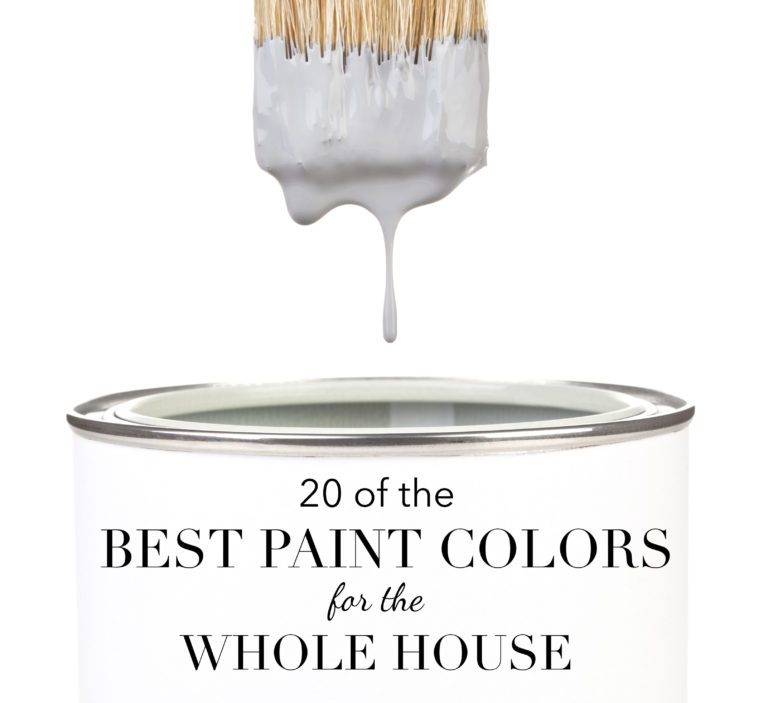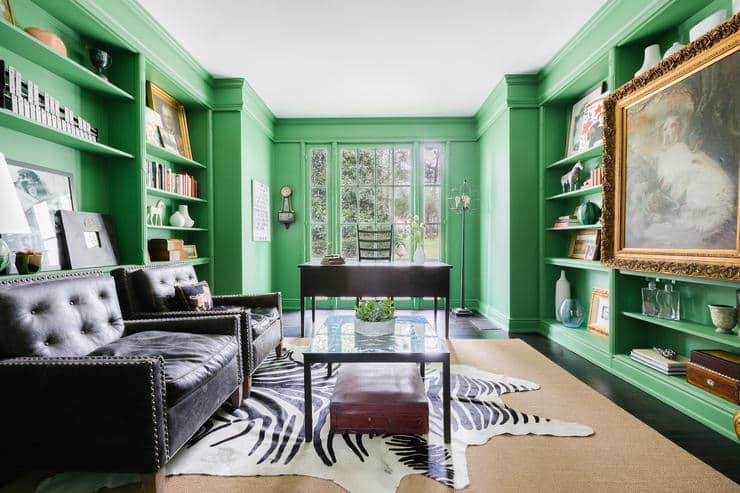When choosing the right paint color for your home, understanding Light Reflectance Value (LRV) is important. LRV measures the amount of light a paint color reflects, helping you predict how light or dark the color will look in different lighting conditions. This simple number can significantly impact how your room feels, whether you’re aiming for a bright and airy living room or a moody, cozy dining space. In this post, we’ll explore everything you need to know about LRV, how it affects your paint choices, and how to use it to create the perfect look in your home.
What Is LRV and Why Does It Matter?
Light Reflectance Value (LRV) is a measurement on a scale of 0 to 100, with 0 being pure black and 100 being pure white. This scale tells you how much light a paint color will reflect back into a room and how much it will absorb. Higher LRV numbers indicate colors that reflect more light, making rooms feel brighter and more open, while lower LRV numbers are associated with darker colors that absorb light, contributing to a more intimate or moody feel.
For example, Sherwin Williams High Reflective White has an LRV of 93, meaning it will bounce a lot of light around the room, making it feel bright and airy. On the other hand, Sherwin Williams Tricorn Black, with an LRV of 3, will absorb most of the light, creating a dramatic, bold look.
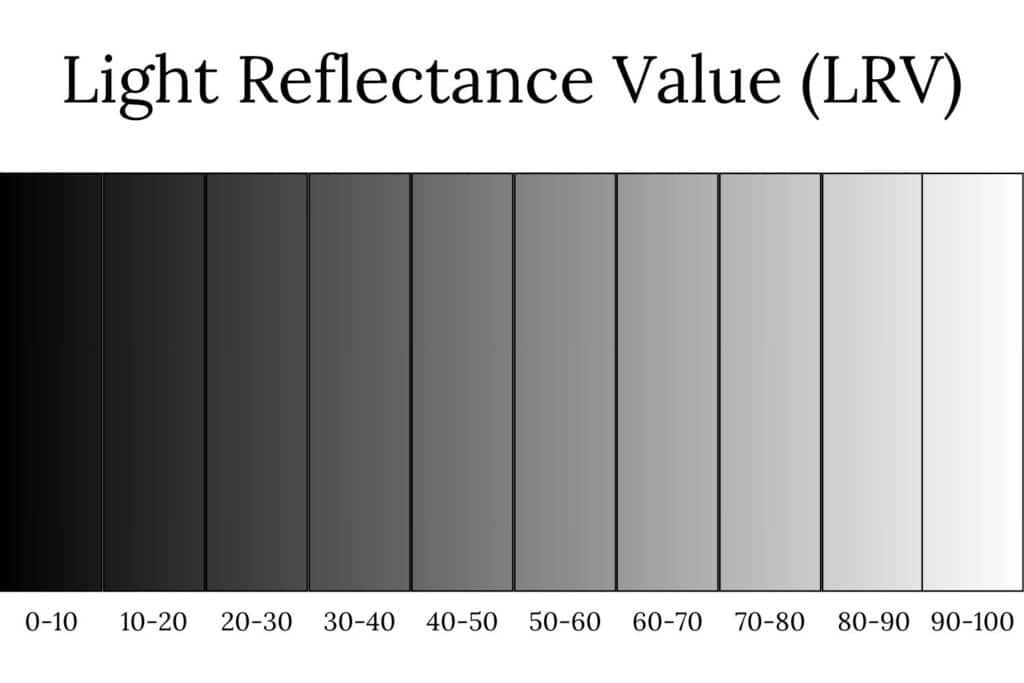
LRV Ranges and Popular Applications
Understanding LRV is key to making the right paint choice for different areas of your home. Let’s break down the most common LRV ranges, what they mean for the lightness or darkness of a paint color, and where each LRV range is best used in your home.
LRV 0-10: Very Dark Colors
Paints in this range are the darkest colors, often including shades like black, charcoal, or navy blue. These colors absorb most of the light that hits them, reflecting very little back into the room.
- Applications: Dark colours in this range are perfect for creating dramatic, intimate spaces. They’re ideal for accent walls, ceilings, or even bold front doors. If you’re designing a room for relaxation, such as a media room or cozy bedroom, dark colors can help create a cocooning effect.
- Example: Benjamin Moore Hale Navy (LRV 8.36) is a bold choice for accent walls or kitchen islands, adding depth and contrast to a room.
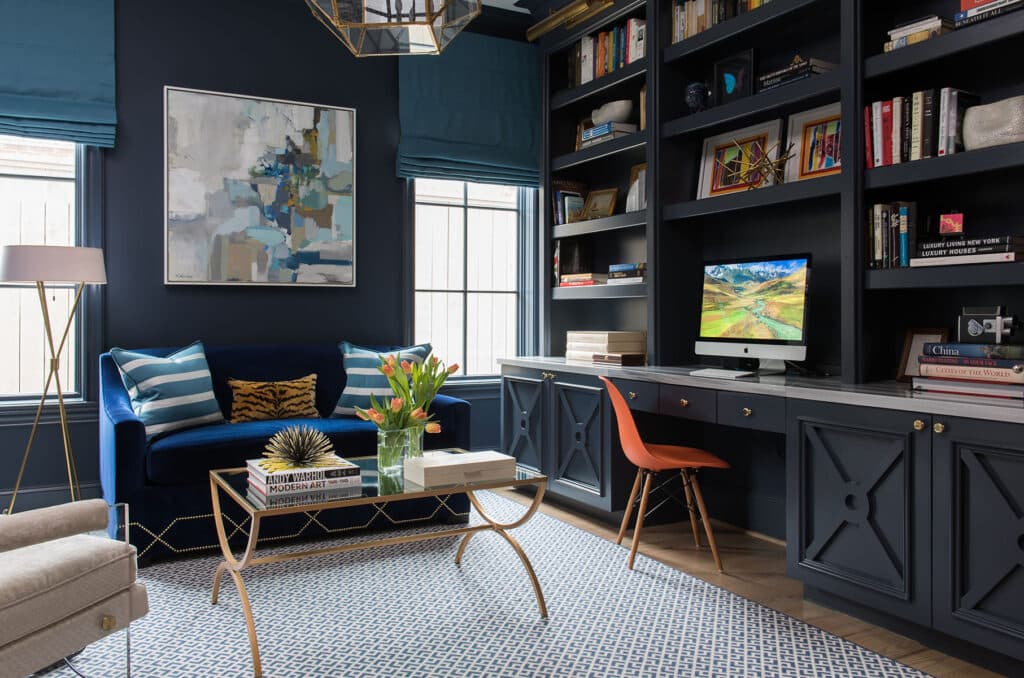
LRV 10-40: Dark to Medium-Dark Colors
Paint colors in this range are darker shades that still reflect a small amount of light. These colors can add warmth and sophistication without making a room feel too closed in.
- Applications: A dark paint color is great for bedrooms, dining rooms, or living rooms where you want to create a cozy, moody ambiance without making the space feel too dark. They’re also commonly used for kitchen islands, feature walls, or exteriors when you want to add depth and contrast to a lighter palette.
- Example: Sherwin Williams Evergreen Fog (LRV 30) is a popular choice for both interiors and exteriors. It works beautifully on an accent wall or even as the main color in a well-lit room.
LRV 40-60: Medium Colors
This range of LRVs includes colors that strike a great balance between light and dark. These colors reflect a moderate amount of light and are versatile enough to be used as a whole-house color.
- Applications: Paints in this range are ideal for living rooms, dining rooms, hallways, and bedrooms. These medium shades work well in spaces with a good amount of natural light and can make a room feel inviting without being too bright or too dark.
- Example: Sherwin Williams Repose Gray (LRV 58) is a popular choice for a whole-house color, offering the perfect balance of warmth and brightness.
LRV 60-70: Light to Medium-Light Colors
In this range, colors start to feel lighter and more airy. These shades still retain enough color depth to stand out against white trim. In rooms that get plenty of natural light, this is a great LRV range to give you a brighter look that won’t feel stark or cold.
- Applications: These lighter colors are great for kitchens, living rooms, or home offices where you want to maximize natural light while maintaining some color depth. They’re also a great option for bedrooms, adding a touch of light color to create a relaxed vibe. Rooms with north-facing windows that receive less natural light will also benefit from these shades, as they can help reflect more light back into the room.
- Example: Sherwin Williams Agreeable Gray (LRV 60) is a widely used light neutral that works beautifully in open-plan spaces, living rooms, and kitchens.
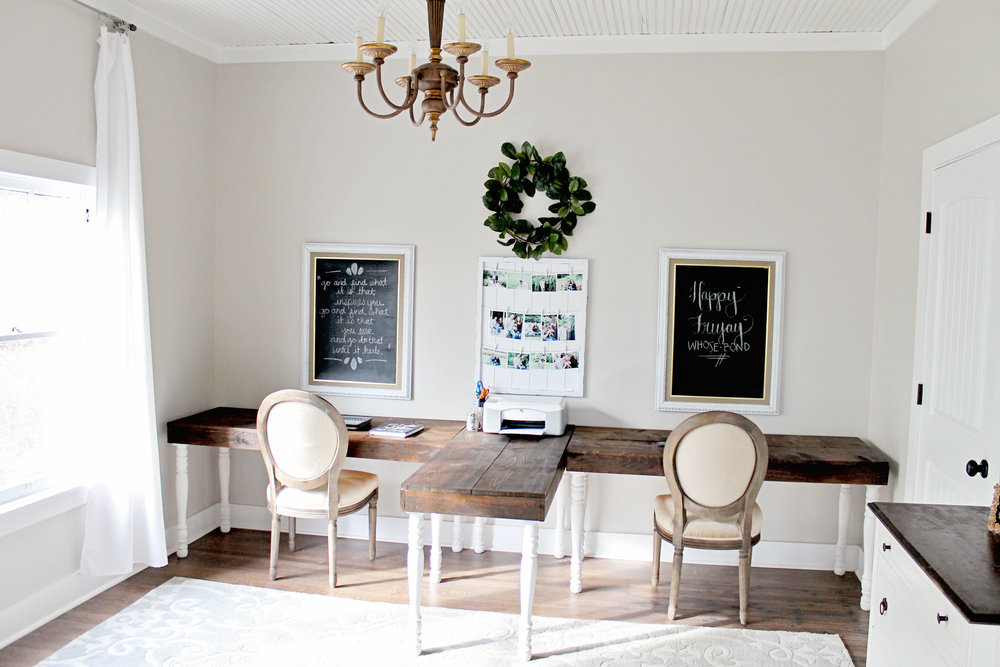
LRV 70-85: Light Colors
Colors in this range are bright and highly reflective, making them perfect for creating light, open, and airy spaces. These shades reflect a significant amount of light, helping to brighten any room, and are great for trim and ceilings.
- Applications: Perfect for bathrooms, entryways, kitchens, and hallways to make smaller or darker spaces feel more open. A light color is a great choice for darker spaces, as a higher LRV paint color will help bounce light around the room. Light colors in this range are often used on cabinets, mouldings, and ceilings to create a soft look.
- Example: Benjamin Moore Classic Gray (LRV 73.67) is a timeless light greige that works well as a bright, airy wall color, and gives a subtle contrast with white cabinets or trim.
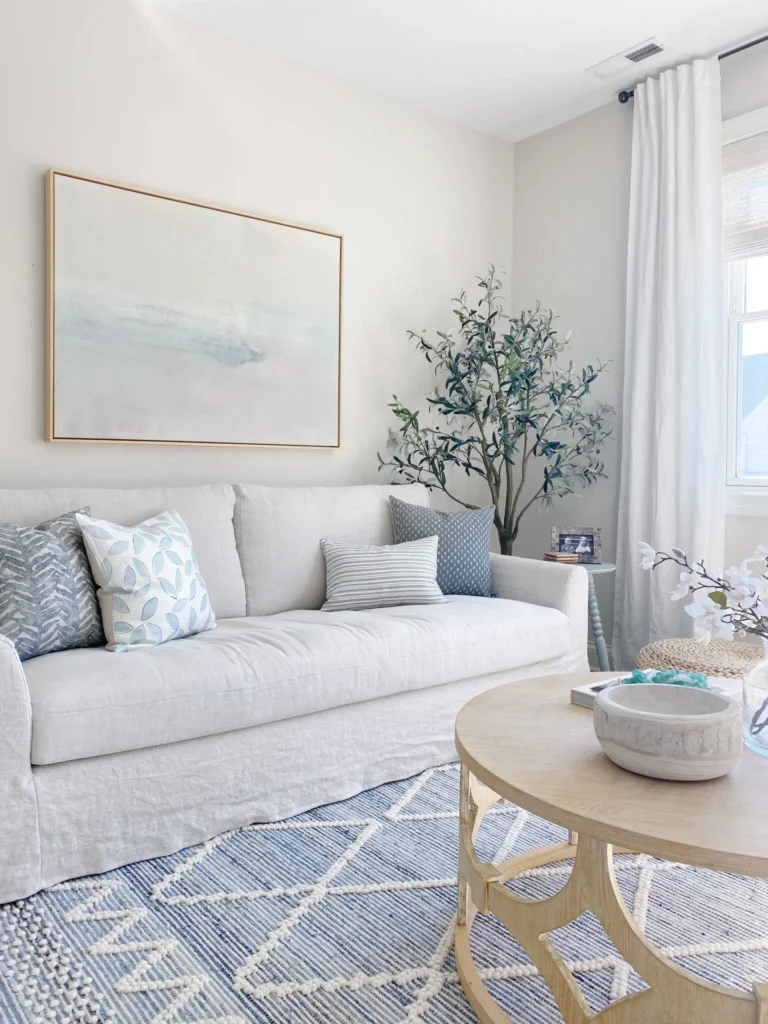
LRV 85-100: Very Light Colors
At the top of the LRV scale, these colors are the brightest and reflect the most light. White paint falls into this range, along with very pale off-whites and pastels.
- Applications: These high-LRV colors are perfect for spaces where you want to maximize the feeling of light and brightness, such as bathrooms, kitchens, or laundry rooms. They’re also a great choice for ceilings, trim, and cabinets. However, very high LRV colors can sometimes feel too stark in rooms with low light, and are often too bright for exteriors
- Example: Benjamin Moore Chantilly Lace (LRV 90) is a bright, crisp, clean white, making it perfect for interior trim, ceilings, or modern spaces where a clean, minimalist look is desired.
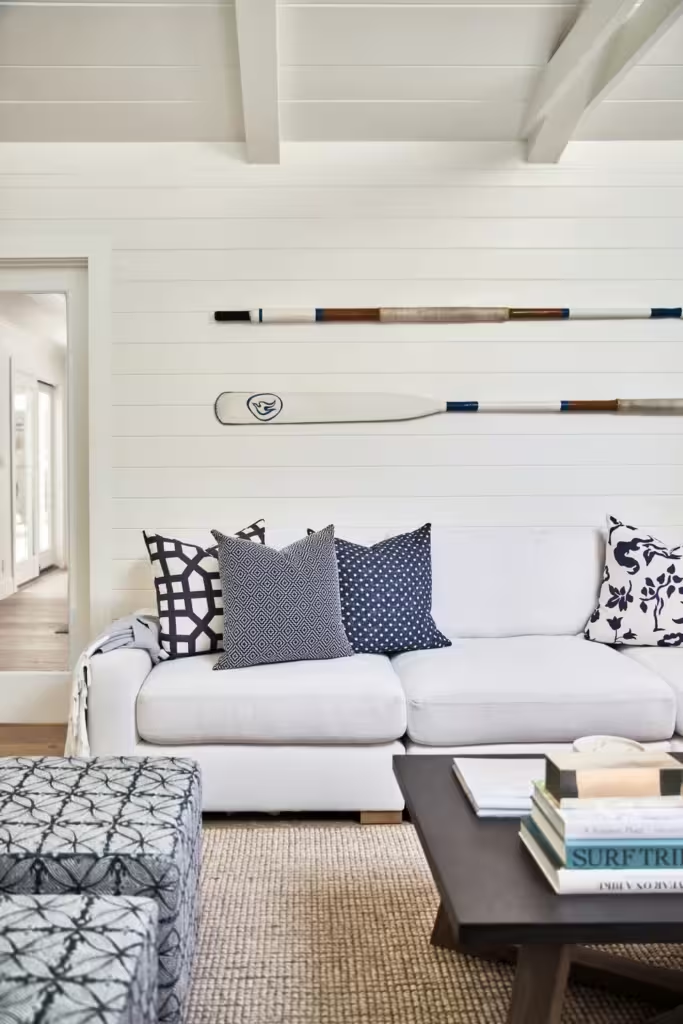
How Do I Find the LRV of Paint?
The easiest way to find a paint color’s LRV is to check the manufacturer’s website, or to look at the paint chip or a fan deck at your local paint store. Paint brands like Sherwin Williams, Behr, and Benjamin Moore provide LRV numbers their websites for each color, or you can look on the back of their paint chips. If you’re not sure, just ask the store staff to help you identify the LRV number of your colors.
What Is a Good LRV in Paint?
The ideal LRV depends on the lighting in the room and the effect you want to create. For most interior spaces, colors with an LRV between 50 and 70 work well because they reflect enough light to brighten a room without washing out the color. However, for darker rooms, such as basements or powder rooms, an LRV above 70 can help reflect more light, making the room feel less enclosed.
For exterior paint, an LRV in the range of 50 to 65 is often a good choice. Lighter colors in this range will help reflect sunlight, keeping your home cooler in hot climates, while dark colors with a lower LRV can help retain warmth in cooler regions. For exterior whites, an LRV less than 85 is usually best to avoid blinding your neighbors.
What LRV Makes a Room Look Bigger?
If you want to make a room look larger, choose colors with a higher LRV, typically 70 or above. These colors reflect more light, creating the illusion of more space by brightening up the room. Light colors, like soft greiges or warm whites, can make your room feel bigger and more inviting.
What is the best LRV for a Dark Room?
For rooms with limited natural light—such as basements, hallways, or north-facing rooms—choose a paint color with an LRV above 60. This will help reflect as much light as possible, brightening the space.
If the room relies on artificial lighting, choose high-LRV colors to make the room feel more open and inviting. You may also want to use warmer colors, depending on your lightbulbs to make the space feel more cozy. Adding light fixtures that aren’t just overhead lighting, such as floor or table lamps, can also help reflect light and bring out the best in your wall color.
How LRV Impacts Mood and Lighting Design
LRV plays a big role in setting the mood of a room. High-LRV colors (above 70) reflect more light, making a space feel bright, airy, and open—perfect for living rooms, kitchens, or home offices. On the other hand, low-LRV colors (below 40) absorb light and create a more intimate, cozy feeling, ideal for spaces like dining rooms or bedrooms where you might want a relaxed, moody vibe.
An artificial light source can also impact how LRV behaves. Warm incandescent bulbs will enhance the richness of lower LRV colors, making darker shades appear cozier. LED lights can make cooler, high-LRV colors look even brighter, perfect for high-energy rooms like kitchens or offices. Understanding the type of light in your room helps you choose the best LRV for your design goals.
Energy Efficiency and LRV
The higher the LRV, the more reflective a color is, which can actually help with energy efficiency. Rooms painted with high-LRV colors require less lighting because they naturally bounce more light around the space. For exterior paint, higher LRV values reflect sunlight and keep your home cooler, reducing the need for air conditioning.
What Is a Good LRV for Exterior Paint?
Choosing the right LRV for exterior paint is essential. Light-colored exteriors with an LRV between 50 and 70 reflect more sunlight, helping keep homes cooler in hot climates. However, if you live in a cooler area, going with a darker exterior paint color with a lower LRV can help absorb more heat and keep your home warmer.
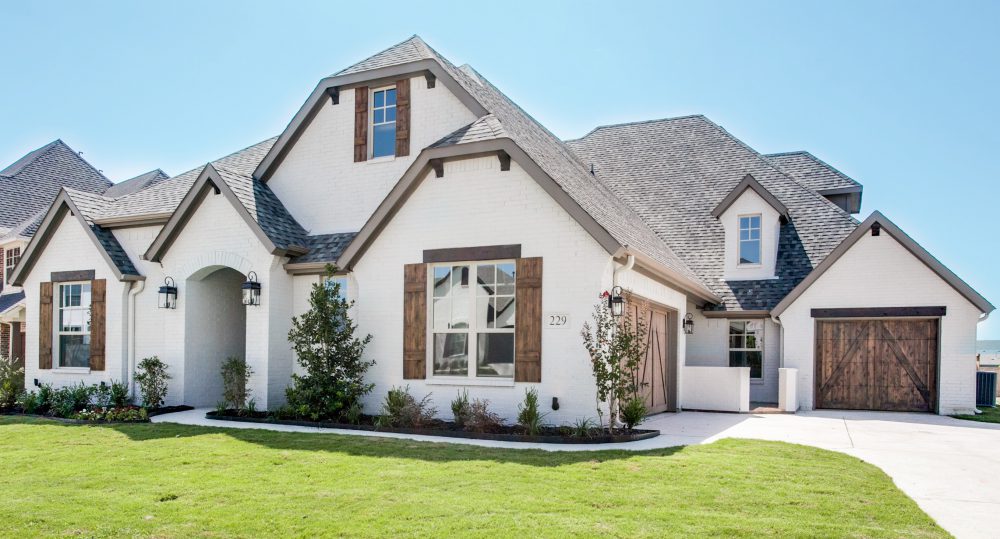
If your home gets a lot of direct sunlight, avoid exterior paint colors with an LRV above 85, as they can create glare. Instead, if you want a light color for your exterior, aim for colors in the 70-85 range.
How to Use LRV to Coordinate Colors
Understanding LRV can help you coordinate colors across your home. A color that looks great in a living room with plenty of natural light might not work as well in a darker dining room. By paying attention to LRV, you can choose shades that complement each other in different lighting conditions. For example, you could use a high-LRV color like Sherwin Williams Alabaster (LRV 82) in your low-light living room, but you might want to go with a slightly lower LRV color like Sherwin Williams Repose Gray (LRV 58) in a well-lit dining room to balance the lighting differences between the spaces.
What’s the best paint color for my home?
Knowing the LRV of a paint colour is one factor, but the only way to choose the best paint color for your space is to test it. Before you commit to a color, get paint samples, place them on your walls, and evaluate the colors to see which one looks best in your specific lighting conditions. Ask any color expert, and they will tell you that this is the only way to ensure you choose the best color for your space. For more tips, check out my post on how to test paint colors.
Final Thoughts
The Light Reflectance Value (LRV) of paint is an key factor to consider when choosing colors for your home. It affects how much light a color will reflect or absorb, influencing the overall mood, feel, and energy efficiency of a space. By understanding how LRV interacts with natural and artificial lighting, you can make better decisions and find the perfect paint color for any room in your home, or for your exterior. Now that you know how important LRV is, the next step is to head to your local paint or hardware store, grab some paint chips, and start creating the perfect space for your style and needs!

